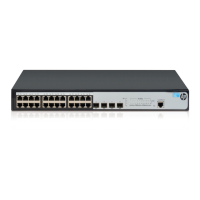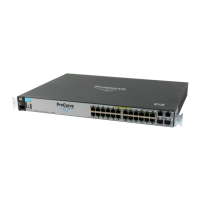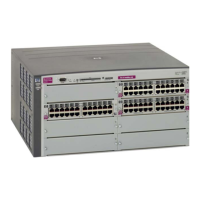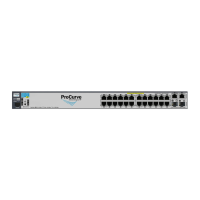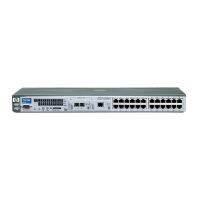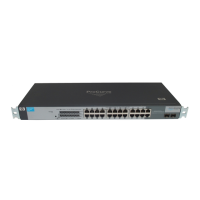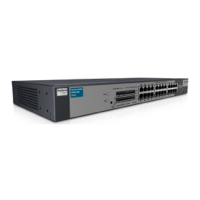Configuration Commands 104
Table 106 CIST Port Configuration commands
Command Description
show interface port {<port
number>} spanning-tree mstp cist
Displays the current CIST port configuration.
Command mode: All
Spanning Tree configuration
The switch supports the IEEE 802.1d Spanning Tree Protocol (STP) and Cisco proprietary PVST and PVST+ protocols.
You can configure up to 127 spanning tree groups on the switch (STG 128 is reserved for switch management).
Spanning Tree is turned on by default.
NOTE: When RSTP is turned on, only STP group 1 can be configured.
The following table describes the Spanning Tree Configuration commands.
Table 107 Spanning Tree Configuration commands
Command Description
spanning-tree stp {<1-128>} vlan
{<1-4095>}
Associates a VLAN with a spanning tree and requires an external
VLAN ID as a parameter.
Command mode: Global configuration
no spanning-tree stp {<1-128>} vlan
{<1-4095>}
Breaks the association between a VLAN and a spanning tree and
requires an external VLAN ID as a parameter.
Command mode: Global configuration
no spanning-tree stp {<1-128>} vlan
all
Removes all VLANs from a spanning tree.
Command mode: Global configuration
spanning-tree stp {<1-128>} enable
Globally enables Spanning Tree Protocol.
Command mode: Global configuration
no spanning-tree stp {<1-128>}
enable
Globally disables Spanning Tree Protocol.
Command mode: Global configuration
default spanning-tree <1-128>
Restores a spanning tree instance to its default configuration.
Command mode: Global configuration
show spanning-tree stp {<1-128>}
Displays current Spanning Tree Protocol parameters.
Command mode: All
Bridge Spanning Tree configuration
Spanning tree bridge parameters can be configured for each Spanning Tree Group. STP bridge parameters include:
• Bridge priority
• Bridge hello time
• Bridge maximum age
• Forwarding delay
• Current bridge configuration

